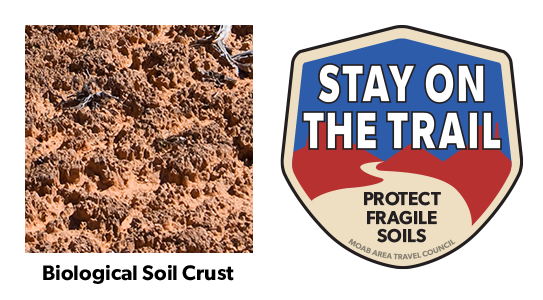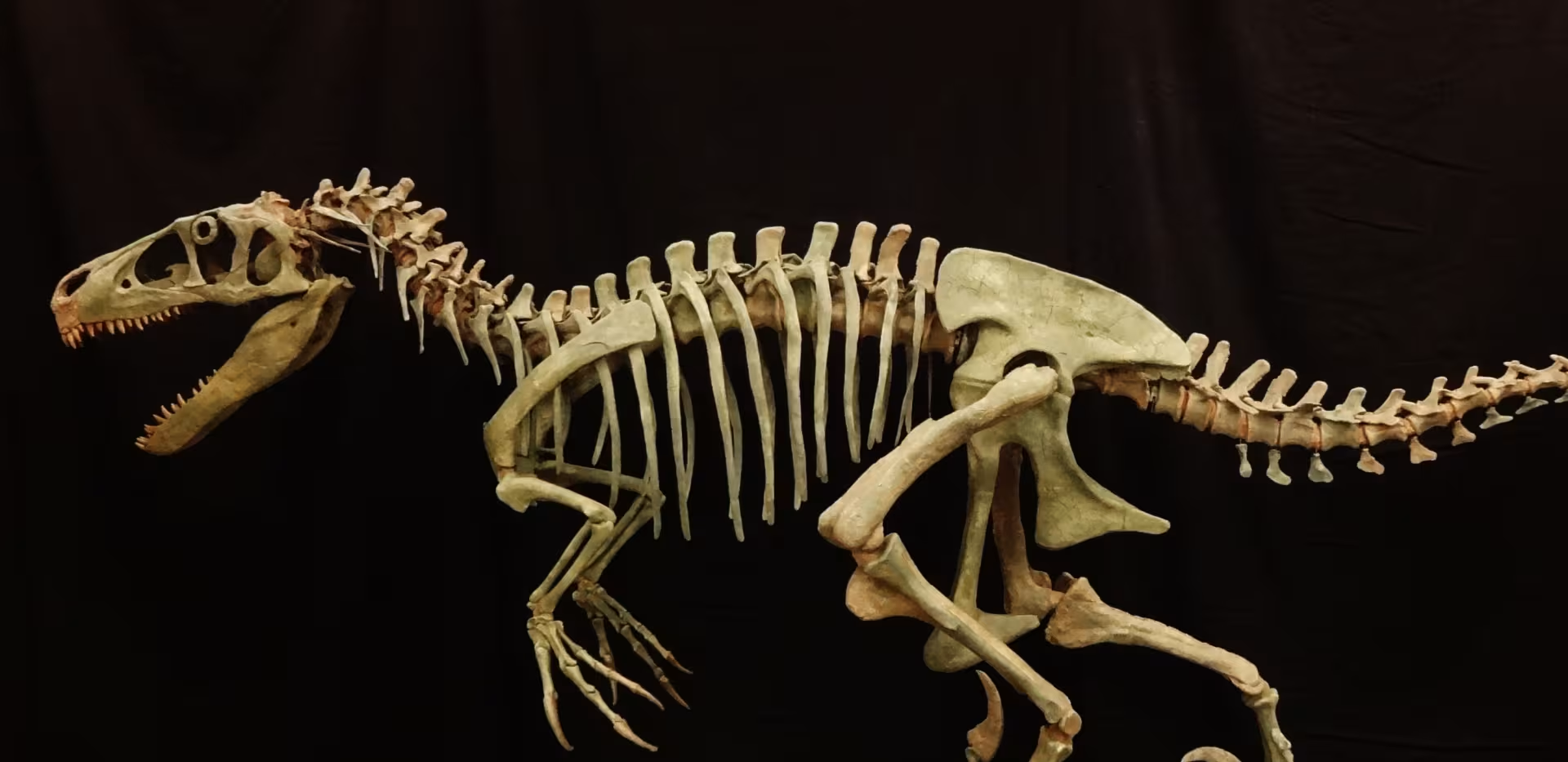Welcome to Utahraptor State Park!
Located roughly 15 miles northwest of Moab, Utahraptor State Park has one of the largest dinosaur bone beds in North America. Over 5,500 bones representing more than ten dinosaur species have been recovered during the site’s 45-year history of excavation and discovery. Species found include the Utahraptor, the armored Gastonia, and the long-necked sauropod Moabosaurus. Paleontologists believe more than 100,000 bones may await discovery at the site. Utahraptor also offers recreational activities, such as off-roading, hiking, and mountain biking—making this a state park that captures the breadth of Utah’s allure.
Biological Soil Crust
Your help is crucial in preserving our trails and protecting the fragile soil that sustains the desert ecosystem. The biological soil crust, also known as cryptobiotic soil, serves as the foundation for desert plant life. This unique black, knobby crust is composed of diverse living organisms and plays a vital role in maintaining the delicate balance of the desert environment.

However, this soil crust is exceptionally delicate and can take several decades to regenerate. Even a single footstep can cause irreparable damage that can persist for years, impacting the entire ecosystem. We urge you to stay on designated roads, routes, and trails to ensure the preservation of this fragile life. In areas where hiking trails are not established, it is advisable to hike on sandy washes or bare rock surfaces to minimize the impact on the soil.
By remaining vigilant and adhering to these guidelines, you contribute to the long-term sustainability of the desert ecosystem and help safeguard its natural beauty for generations to come. Let’s work together to keep all of our trails open and protect the invaluable biological soil crust.
If you are planning to visit the area, be advised Arches National Park is once again utilizing their Timed Entry Pilot Program. Tickets will be required during certain times of day and year. See the following link for more information https://www.nps.gov/arch/planyourvisit/timed-entry-reservation.htm
